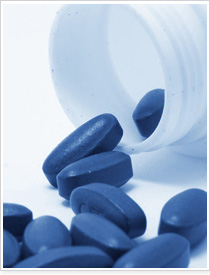Pharmaceutical Quality Assurance - Quality Standard - LNAge

Among the activities carried out by LNAge for customers there is the pharmaceutical Quality Assurance service. Our company is responsible for implementing quality systems, which are fundamental for medical and pharmaceutical companies and, thanks to the certification of its Quality System, in compliance with ISO 9001 standards, offers a quality control service to sponsors and partners, both on business processes, both with regard to production systems, and in the field of clinical research.
The figure of the QA manager is of fundamental importance in the pharmaceutical and clinical research sector. This professional can be internal to the company, where he still operates in total autonomy from the other sectors, or external.
Many companies, in fact, prefer to entrust the audits on their quality systems and the checks concerning the possession of the requirements of ISO 9001 and the FDA-EMA systems, to an external professional, so as to guarantee greater objectivity to the controls carried out.
Pharmaceutical Quality Assurance
the quality control system

At the base of any Quality System, or the set of rules according to which the work of a CRO or a pharmaceutical research and development center must be carried out, there are the SOP (acronym for Standard Operating Procedure), a set of instructions in written form that describe the actions and processes that are most frequently carried out within any organization that deals with pharmaceutical research and development.
The Quality Assurance Manager deals with the development and validation of soPs that proceeds in parallel with the development of quality systems by the company itself.
The SOPs, which can be developed within the CRO or can be prescribed by a sponsor in the studies and other services commissioned by it, describe the operations that take place in a specific area and relate to a wider set of activities that generally described by the Quality System or the Quality Manual.
Among the main elements that make up the Procedural System (or, more simply, the procedures) we point out:
- the Policies, i.e. the documents that describe the declarations of intent of the CRO and explain its commitment to maintaining scientific and quality standards, recalling the current legislation and the specific laws of the Italian and European legal system;
- the GP (General Procedure) or MP (Master Document), i.e. the documents that, in more detail, draw up guidelines relating to the methods of application of the policies identified and the most important processes of the Pharmacovigilance and Quality System; these documents also highlight the ways in which the requirements of the European or American reference legislation can be met, even with regard to complex systems such as computer systems;
- the SOP (Standard Operating Procedures) or documents that describe a specific aspect or a specific way of operating, also prescribing the correct actions to comply with the reference legislation.
On the SOPs the basic training of the personnel in charge of Pharmacovigilance takes place, they can, therefore, be the subject of specific training courses carried out by the head of Quality Assurance and, as part of the Clinical Trial, can be the subject of specific requests and questions by the Ethics Committee of the structure that hosts the experimentation of a medical device or a therapeutic protocol. SOPs can also describe the ways and times of handling reports to a sponsor, to the parent company or, in any case to Third Parties, the methods of carrying out the PSURs, Due Diligence or SDEA.
Among the other fundamental elements that make up the procedural system on the basis of which the manager and the Quality Assurance employees operate, we recall, finally:
- WI (Working Instruction) that concerns a single process and describes and provides practical and operational details;
- Controlled Documents that prove the systematic activities carried out or the checks performed;
- Third Parties (Third Parties to a process or action), may be sponsors, other licensed or licensed pharmaceutical companies or other specific service providers (other CROs);
- Due Diligence, i.e. the process of acquiring information on a Third Party to verify whether it really manages to meet the requirements of reliability and quality;
- the SDEA (Safety Data Exchange Agreement), or the technical specifications between two companies for the exchange of information on a drug and on the safety of its use in humans.
Quality Assurance
pharmaceutical tasks carried out in LNAge
It is also worth mentioning some other, fundamental, tasks by the QA Manager and the Quality Control Analysts in LNAge. These figures, being called to carry out quality control activities both at the process level, both at the level of retrieval and use of raw materials, both at the product level and with regard to post-production processes:
- coordinate and supervise the professionals involved in the manufacture of pharmaceuticals and medical devices, to ensure the control and efficiency of the quality system;
- verify that the most appropriate agreements are made for the use of raw materials and packaging materials;
- ensure that pharmaceutical Quality Assurance checks are carried out on semi-finished products during the production process, so as to verify the adequacy of the products to the rules for placing medicinal products on the market;
- examine production processes;
- monitor and validate manufacturing processes and IT systems;
- compile documentation concerning laboratory procedures;
- identify, report and, if necessary, remove any anomaly and any cause of the defects identified in the monitored processes;
- review and update the standard operating procedures, necessary for the Quality Assurance activity;
- following the first checks, they make any changes to the production process, so as to identify minor defects and minor anomalies in subsequent quality control inspections;
- they can deal with analytical and problem solving projects, regarding the instrumentation used;
The Head of Quality Assurance associates a scientific Master's Degree (Pharmacy, CTF, Biology, Biotechnology) with an in-depth knowledge of GMP (Good Manufacturing Practice), analytical knowledge and a good organizational ability. Finally, this figure is also involved in training activities because it can verify the permanent training of the Monitors present in the company, or active in client companies, evaluating the possession of the CMEs required by current legislation.
Quality System Certification – ISO 13485 standard
LNAge's Quality System is certified according to the ISO 13485 standard, a quality management system standard specific to companies in the clinical, pharmaceutical and medical sectors, which includes aspects of the ISO 9001 standard and specific requirements for companies operating in the design, study and implementation with medical devices.
Obtaining and certifying the LNAge Quality System according to the EN ISO 13485:2012 standard, which takes into account and complies with the provisions of the three main European Directives on medical devices (Medical Devices, In Vitro Diagnostic Medical Devices and Active Implantable Medical Devices), is advantageous and, sometimes, essential to export products to the global market (as, for example, in the case of Canada, which requires it compulsorily to allow the marketing of medical devices on its territory); in the European Union, compliance with EU directives allows the free marketing of medical devices.
The verification of the requirements by Quality Assurance and the subsequent certification of the Quality System according to the EN ISO 13485: 2012 standard attests to greater efficiency of the company, guarantees greater marketability of products and services of sponsors and third-party companies, allows you to add value to the respective business, identifying the risks deriving from areas that do not comply with the quality system itself and the opportunities for improvement.
Quality System Certification – ISO 9001 Standard
The LNAge Quality System is also certified according to the ISO 9001 standard. It is a standard adopted by many companies, both private and public, belonging to different product sectors. The ISO 9001 Certification, whose parameters the Head of Pharmaceutical Quality Assurance is called upon to verify compliance, is used to increase trust and guarantee the quality of the products and services offered by the many types of companies, between business partners in business-to-business relationships, to choose suppliers in the supply chains in a more conscious and profitable way and to select participants in tenders and tenders.
- The ISO 9001 certification is obtained by demonstrating some fundamental characteristics that pharmaceutical Quality Assurance personnel must constantly monitor and verify:
- the preparation of an adequate quality management system for the implementation and accreditation of products, medical devices and therapeutic protocols;
- the analysis and understanding of customer needs and expectations;
- the analysis and understanding of statutory requirements and regulations relating to specific products;
- the guarantee that the characteristics of the product have been defined in such a way as to meet the customer's requirements and the statutory and regulatory requirements;
- the determination of the processes and the management of them so that these are aimed at obtaining the expected results and satisfying the customer;
- ensuring the availability of the resources necessary to support the activities and monitoring of these processes;
- effective compliance with the characteristics defined for a specific product;
- the prevention of any non-compliance and the adoption of pre-established improvement processes, always carried out by Quality Assurance employees, for the resolution of any non-conformities, for the analysis of the causes of non-compliance, to carry out corrective actions and for the management of any customer complaints;
- adoption of specific hardware and software for carrying out IT procedures;
- compliance with specific paper, optical and digital archiving methods, of different types of documents and materials;
- adoption of specific procedures for the naming of certain files and the maintenance of anonymity, in compliance with the Privacy legislation.

 Italiano
Italiano